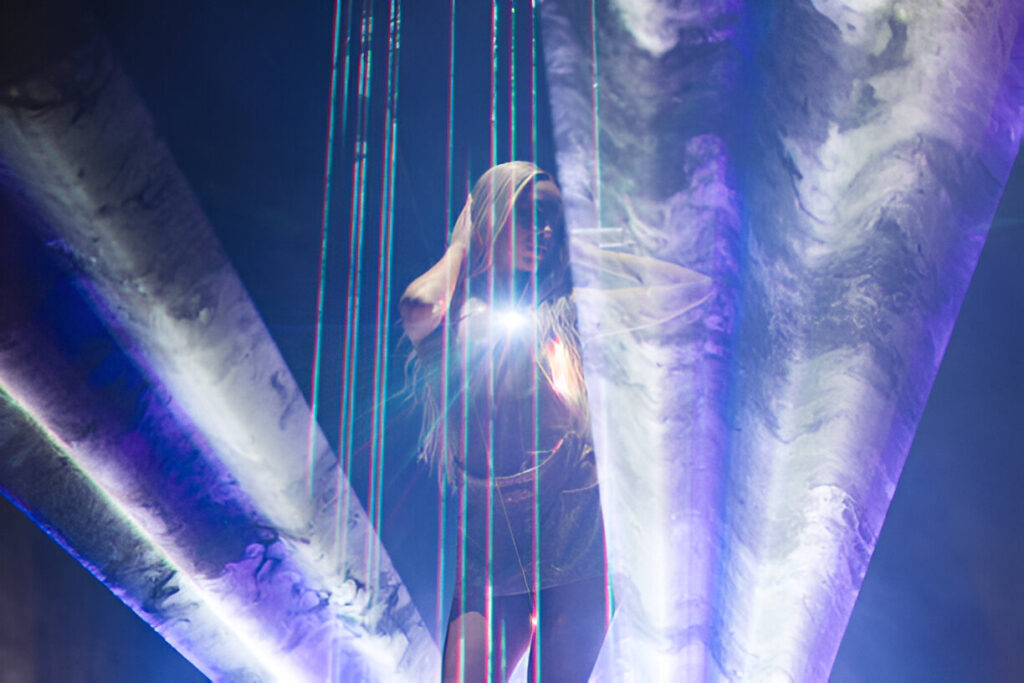Digital natives, misnamed by previous generations as the “glass generation”: sensitive to mental health, diversity, care for the planet… Generation Z begins with those born in the mid-1990s as a result of major global changes such as the creation of Google. The identity of the Centennials – like any other youth subculture throughout history – has some very distinctive features. Their inclusive nature means that aesthetics becomes a mechanism for externalisation, and their clothes, their way of expressing themselves, their music, their tastes, are further proof of their inclusiveness. The fluctuation of gender expression, the abolition of conservative canons of what is “male or female” or the empowerment of women are the main axes on which the centennial personality is based.
Music, a transcendental ally. The rise of fused varieties with roots in historically mistreated music – such as reggaeton – and their passage into the mainstream has meant that centenarians have their own cast of generational divas: Rosalía, Karol G or… Bad Gyal.
Eclecticism as an identity in itself
In February 2023, Bad Gyal performed at her first Palau Sant Jordi: “You know I’m not very good at talking. I came to give a party, I’m in Barcelona, at home, and so I want to announce that my new album will be called ‘La Joia’,” she said in the middle of the show. A year later, her own prediction came true with another sold-out show to launch the 24 Karats tour, bringing together more than 16,000 people.
She entered the music industry eight years ago with ‘Pai’ and ‘Indapanden’, uploading the videos to her rudimentary YouTube channel. “I did it alone, nobody helped me, neither my colleagues in the village nor my parents, nobody understood my move,” she revealed in an interview. Her penchant for Jamaican roots rhythms – she was a pioneer in introducing dancehall to Spain – or nods to R&B, as in her reinterpretation of Rihanna’s “Work”, sowed the seeds of a paradigm shift that had been brewing since the middle of the last decade and has now taken root. Bad Gyal is an accidental forerunner, representative of a new scheme that would characterise the current mainstream scene.
Its eclecticism makes it easy to generalise: Trap? dancehall? reggaeton? Its beginnings can be placed in the context of the emergence of underground genres such as trap, which undoubtedly marked a break with the archetype of the Spanish music industry.
The emergence of new codes and varieties led to the misuse of the term “urban music”, which still exists today. The term does not make it very clear whether it is a genre in itself, it is in a way a catch-all and a “whitening” of traditionally black genres: in the 1980s in the United States, it was used to include everything related to hip hop or R&B. Since the 2000s – especially with the mainstreaming of traditional Latin genres – it has been used to encompass everything from reggaeton to trap. Although Bad Gyal did not surf the trap wave, the logic of urban music has certainly engulfed him. It is difficult to define what genre she is in, but it is easy to see all her influences coming together in her work.
“I don’t want girls to look at me and want to be like me. But I go out in Barcelona, and I see a lot of girls who have gone shopping… I see Bad Gyals on the street, so to speak,” she confessed in an interview with Ernesto Castro for Vice. Their love of fashion is evident in their dosmilero (y2k) outfits, blonde wigs, and rococo nails. Born in 1997, Alba Farelo has also been a pioneer in setting new standards in an industry where aesthetics is paramount. She doesn’t just make music. She makes music and fashion, and is a Gen Z who speaks to – and references – Gen Z. In the hour-and-a-half concert in which she compressed 36 songs, she also booked a catwalk, arriving with luxury bags emblazoned with her initials, while the audience went wild with cries of “queen“.
“Let’s see if you can turn on the fans, everybody, full, full, full, full, full. Let’s go to the party, right?” was one of the few sentences she said during the whole show. Because Bad Gyal doesn’t offer concerts as usual. She offers shows and parties with costume changes and physical rituals with her ass as the protagonist. An artist without complexes, she is aware that her choreographies are her trademark, just like the autotune in her sound. “As for the songs, I do everything myself, the choice of producers, the sound of the beats, what kind of sounds…” she assured in an interview. As she says in her song Slim Thick, “Bad Gyal’s lyrics are written by Alba”. And the fact is that the shamelessness with which she talks about sex arouses passion and criticism in almost equal measure. “He calls me saint, saint Mary / Because my pussy is tight as the first day,” she sings in one of her reference tracks. The Catalan artist is an obscene and vulgar discourse for a certain morality and a plea for the empowerment of the new generations.
Connecting with the LGTBIQ+ world
The Bad Gyal phenomenon has captivated centennials and become an icon for the LGTBIQ+ public. “Yo solo quiero janguear y pasarla bien” (I just want to party and have a good time), one of their slogans that young people have identified with: have fun, do what you want and dress how you want. In the Spain of the last century, in a context of greater oppression and repression towards the LGBTIQ+ collective, the great divas of song became an indispensable refuge: bombastic outfits, shocking – and very characteristic – hairstyles, a visceral expression of their passions… A public thirst for representation found in these strong and disruptive female figures a halo of hope. Just as it happened with the pop divas from the 90s onwards – in a global context and with more rights – and just as it is now being channelled into the representatives of the urban scene with the paradigmatic case of Bad Gyal. She is the new folklore.



